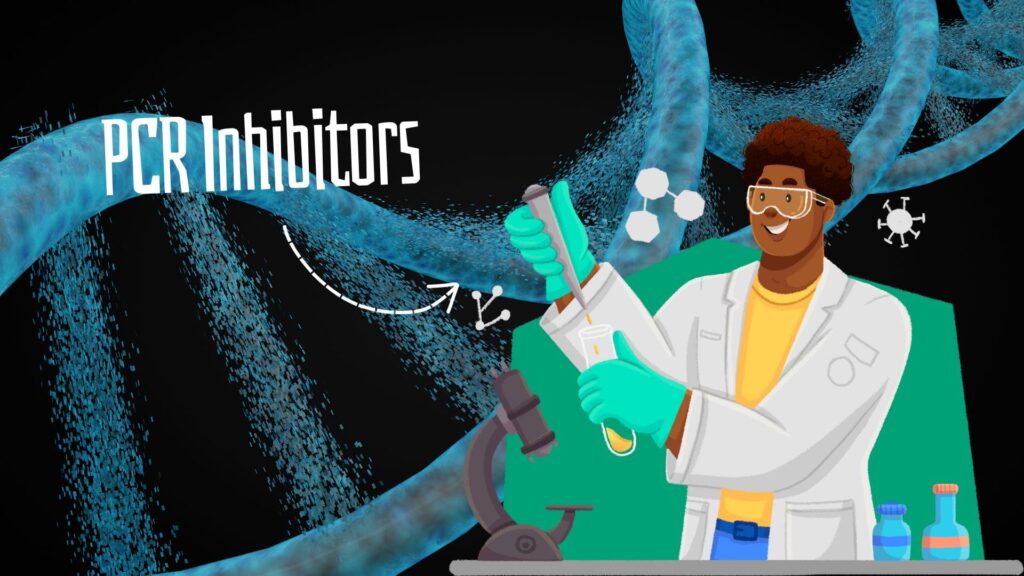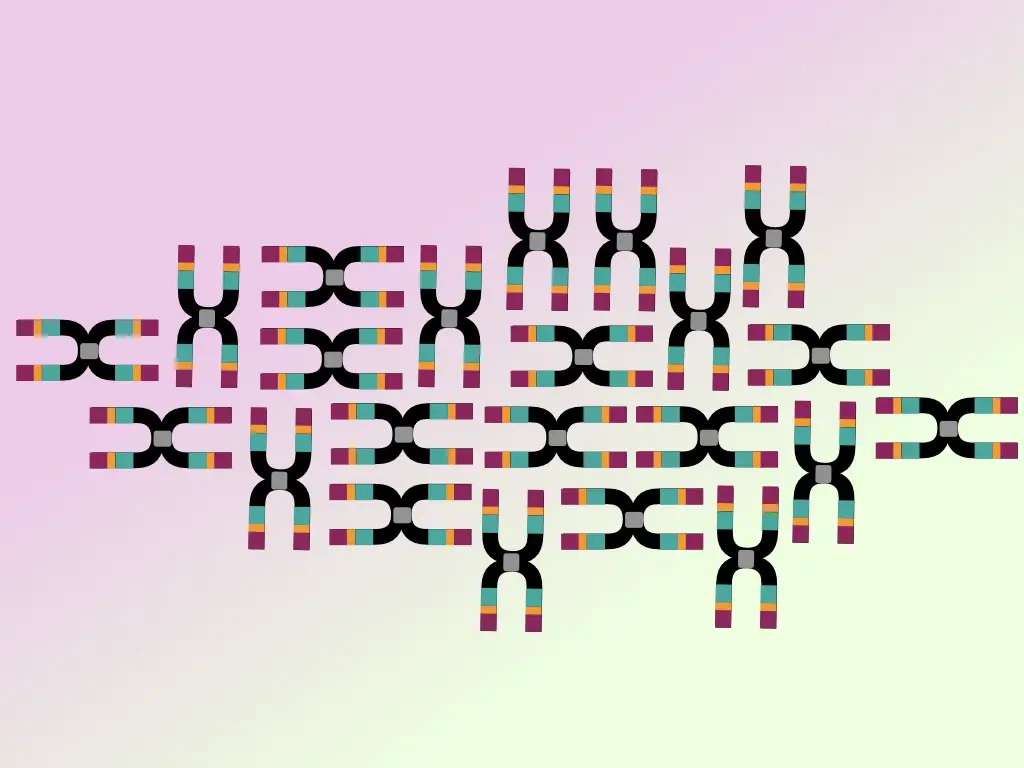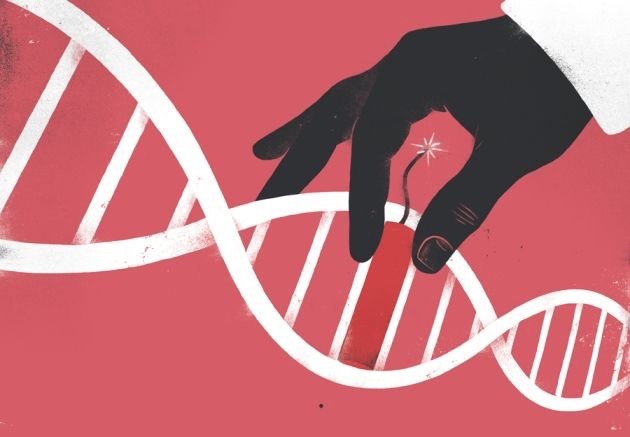“PCR inhibitors are biological, chemical or other agents that negatively affect the PCR reaction. In this article, learn about various types of PCR inhibitors, the mechanism of inhibition, and how to remove them.”
PCR, Real-time PCR or qPCR have been applied in various fields including diagnosis, medical research, food industries, microbial studies and other related life science fields.
Its role is to amplify and quantify the DNA or RNA present in the sample. However, it’s not as easy as we are talking. Inhibitors present in the sample, reamined during sample preparation can fail or negatively affect the PCR reaction.
This, eventually, leads to false positive or false negative results. Common chemicals, we are using during the extraction process, components present in the biological sample and the constituents of the cell, work as reaction inhibitors.
In this article, I will explain what PCR inhibitors are, how they inhibit the reaction and how to remove such inhibitors from the reaction. Further to this, I will explain various types of PCR inhibitors too.
At Genetic Education Inc. we re-discover the knowledge and present it understandably. This article will help you improve your overall PCR knowledge and results.
Stay tuned.
Key Topics:
What are PCR inhibitors?
The simplest explanation of PCR inhibitors is– substances, chemicals or agents that prevent effective PCR amplification. Before moving ahead we will have to understand the concept of PCR inhibition.
PCR inhibition means by any means the amplification reaction can be affected negatively. In normal conditions, it may result in reaction failure, no results or lack of amplification but it may compete with the reaction constituents (like the template DNA) and reduce amplification.
This means that inhibitors that reduce enzyme activity result in lower amplification efficiency. This condition is also considered as PCR inhibition.
So put simply, PCR inhibitors are ‘something’ that can inhibit our PCR or qPCR reaction. Broadly, cell wall and cytoplasmic constituents, Cellular debris, chemicals used during the isolation process, and impurities are categorized as PCR inhibitors.
I have categorized them into two groups, biological PCR inhibitors and chemical inhibitors. We will discuss this part later on in this article.
How do inhibitors inhibit the PCR reaction?
Now in this, we will discuss the mechanism behind PCR reaction inhibition. Keep in mind that every substance or chemical uses a different mechanism to do this job. Some may bind with the target DNA or some may affect the activity of the enzyme.
For instance, EDTA which we are using during the extraction and elution process is a potential chelating agent. It chelates the Mg2+ ions from the reaction. As we know the Mg2+ ions are the cofactors for the enzyme; chelation negatively affects the activity of the Taq DNA polymerase.

Proteases, detergents (like Urea) and phenol can directly degrade the enzyme and fail PCR reaction.
Contrary, the higher concentration of metal ions decreases the specificity of primers. In addition, the competitive binding nature of some inhibitors prevents effective primer binding to template DNA.
Nucleases like DNAse directly degrade the target DNA and fail the entire amplification process.
Inhibitor agents, their mechanism of action, and inhibitor effect are enlisted here:
| Agent | Mechanism |
| EDTA | Chelating agent for Mg2+ ions. Reduce enzyme activity. |
| Detergents, proteases and phenol | Target the Taq DNA polymerase and degrade it. |
| Nucleases | Target the nucleic acid DNA/RNA, degrade it and prevent amplification. |
| Calcium | Inhibits Taq DNA polymerase or reverse transcriptase enzyme. |
| Exogenous or foreign DNA | Compete with the template DNA and reduce the amplification efficiency. |
| Polyphenols | Chelate metal ions, cross-link with the DNA and co-precipitate with the nucleic acid. |
| Polysaccharides | Nucleic acid degradation. |
| Haematin | Incomplete DNA melting. |
| Collagen, haematin, secondary metabolites, immunoglobulins, myoglobin, melanin, sodium, tannic acid and other chemicals | Inhibit enzyme activity (Taq DNA polymerase and Reverse transcriptase). |
Put simply, PCR inhibitors inhibit a PCR reaction by affecting enzyme activity, primers, and melting temperature, by degrading the DNA and enzyme, and disallowing any reaction component.
Did you know?
List of PCR inhibitors:
I broadly divide PCR inhibitors into biological inhibitors and chemical inhibitors.
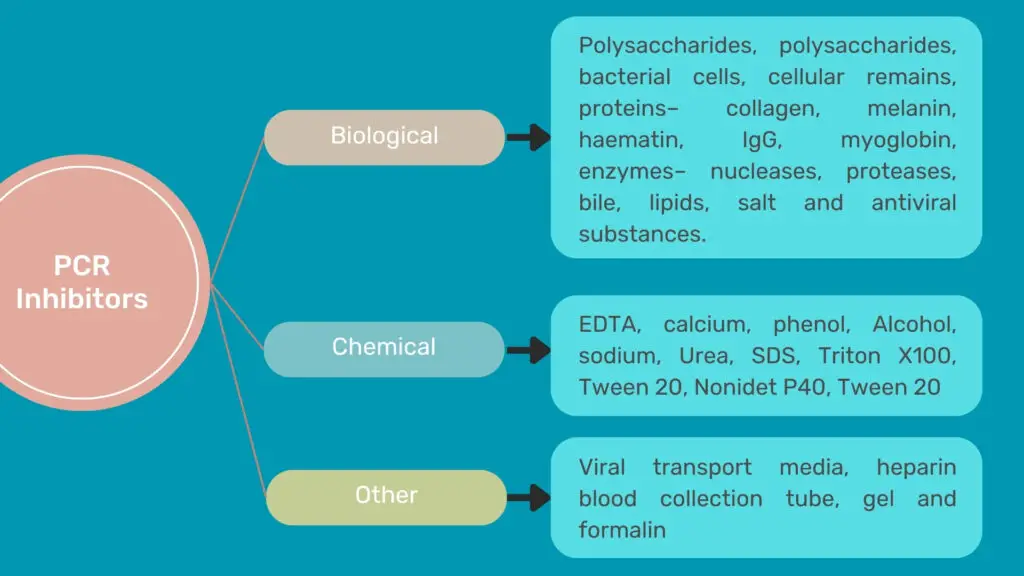
Examples of Biological PCR Inhibitors:
Biological inhibitors are present in the biological samples and have the potential to inhibit the PCR reaction. For example, plant polysaccharides and polyphenols, bacterial cells, cellular remains, proteins– collagen, melanin, haematin, IgG, myoglobin, enzymes– nucleases, proteases and other components like secondary metabolites, etc.
Others are lactoferrin, hemoglobin, bile, lipid, plant pectin, chitin, and xylan.
Examples of Chemical PCR Inhibitors:
Chemical inhibitors are present in the solution, buffer or any agent that we use during the extraction, purification or reaction preparation. For instance, EDTA, calcium, phenol, alcohol, sodium, Urea, solvents and other chemicals.
Exogenous DNA is also listed as a potential PCR reaction inhibitor.
Examples of other PCR inhibitors:
Viral transport media, heparin blood collection tube, gel and formalin are other potential PCR inhibitors commonly found in a lab.
Did you know?
Related article: DNA Extraction From Blood.
PCR inhibitors in clinical samples:
It’s also crucial to understand that the inhibitors aren’t only introduced during the sample preparation. The sample also contains a few types of inhibitors (depending on the type of sample) that may inhibit the PCR reaction.
Clinical samples such as nasal swabs, blood, saliva, plasma, urine and stool also contain inhibitors.
PCR inhibitors in blood, serum and plasma:
These three types of samples usually contain hemoglobin, IgG, lactoferrin, antiviral substances and hormones that are potential PCR reaction inhibitors. Such components should be removed before using the sample for PCR.
PCR inhibitors in Urine:
Urine contains Urea which is a known inhibitor of the PCR or qPCR reaction. However, the amount of urea in urine depends on the age and health of the patient. In addition, if proteins are also presentin in the urine (in case of a medical condition), it will also interfere with the amplification reaction.
PCR inhibitors in stool:
Stool contains polysaccharides, bile, lipids, salt and other chemicals. These chemicals are potential inhibitors of PCR.
PCR inhibitors in plants:
Usually, it’s difficult to extract good quality DNA from a plant sample and therefore amplification is always a difficult part, when it comes to a plant sample. Components present in the plant cell such as pectin, polyphenols, xylan and polysaccharides are difficult to remove from the DNA.
In addition, polyphenolic compounds and secondary metabolites also cause inhibition. These components are known PCR inhibitors. A prior DNA purification step is followed to remove such things when dealing with plant DNA extraction.
PCR inhibitors in saliva and nasal swabs:
I read a lot of literature regarding this topic but couldn’t find any peer-reviewed sources. I guess enzymes and proteins present in the saliva or nasal swab can potentially inhibit the PCR reaction.
PCR inhibitors during Sample preparation:
Chemical inhibitors are also added during the sample preparation, for example– powder on the gloves, poor quality lab plasticware, non-autoclaved utilities, etc. may contain inhibitory chemicals.
In addition to this, nucleases if present on tips, pipettes, tubes or anywhere in the working area can degrade the nucleic acid and fail the amplification reaction.
How to remove PCR inhibitors?
Now, you may have a question, what should we have to do? Should we avoid using these chemicals during DNA extraction? Or do we have to change our sample type option? Don’t worry. You don’t have to do that.
I will guide you through a step-by-step process so that at any step of your experiment you can’t get stuck. Because every time DNA purification will not work!
Use a correct DNA extraction technique:
The very first source of PCR inhibitors came from the extraction. The wrong selection of nucleic acid extraction technique may add inhibitors to the PCR reaction. So the first strategy is to select the right extraction technique.
The selected nucleic acid technique should be suitable for the sample type. For example, Proteinase K-CTAB-based DNA extraction gives good results for Plant samples, while phenol-chloroform-based DNA extraction techniques provide good results for blood, tissue and other biological samples.
Chemicals we use in the NA extraction like– SDS, Triton X100, Tween 20, Nonidet P40, Tween 20 and sarkosyl are also known for their significant inhibitory effects in PCR.
Ideally, it’s recommended to use a read-to-use spin column or other DNA extraction and purification kit. These give excellent results. However, again, choose the right extraction technique as per the requirement and need.
Chemicals like EDTA, sodium and other salts also work as inhibitors during the PCR. You can use ready-made DNA extraction solutions or use ready-to-use kits. Also, I suggest eluting DNA into doubled-distilled water if you face inhibition in PCR.
I also strongly suggest purifying the nucleic acid with a good technique.
Related article: How to Choose the Right DNA Extraction Method?
Use purification:
Chemical traces should be present in our nucleic acid so it is advisable to purify the DNA prior to PCR. There are many techniques we can use to purify the DNA. Alcohol purification is the best and most effective purification technique, although.
Other than that, chromatography, ready-to-use purification kits, and solid phase isolation are a few other options for purifying the DNA. I wrote a well-researched article on this topic. This will guide you through the process.
Related article: DNA Purification: Importance and Techniques.
Selection of PCR additives:
PCR additives, though, have been known for their role in uplifting the reaction efficiency, however, unnecessary use of PCR additives may also result in reaction failures. In fact, some PCR additives are now known for their inhibitory effect.
For example, any kind of detergent if present in the buffer or additive solution can impact the amplification. Use additives or reaction buffers only if required.
Use controls:
PCR reaction controls– positive, negative and internal controls help understand the results i.e. false-positive or false-negative results if present. To understand the impact of PCR inhibitors on the reaction use controls.
Click the link and read the article to learn more about types of PCR controls and how to use them in the PCR reaction.
Other suggestions:
- Use molecular-grade chemicals and plastic utilities.
- Use sterile and autoclaved utilities only.
- Pre-research about the chemicals and solutions used in the process. Understand their significance and impact on the reaction.
- Last but not the list, measure the purity of the nucleic acid, prior to use in PCR.
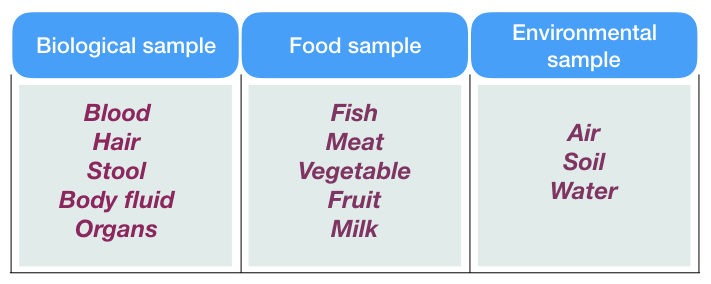
Wrapping up:
In my opinion, effective DNA purification will certainly remove all types of PCR inhibitors. Thus, choose a good DNA purification technique or on the safe side use a ready-to-use purification kit.
However, dealing with plant DNA is a bit difficult process. There is a very high chance that even after the purification, inhibitors might present in the sample. PCR inhibitors majorly create problems in qPCR, RT-PCR and droplet digital PCR experiments.
Following common and healthy lab practices will surely help you overcome this situation. I hope you like this article. Share this article in your research circle and bookmark the page.
P.S: Check out our PCR mastery course.
Sources:
Sidstedt M, Rådström P, Hedman J. PCR inhibition in qPCR, dPCR and MPS-mechanisms and solutions. Anal Bioanal Chem. 2020 Apr;412(9):2009-2023. doi: 10.1007/s00216-020-02490-2. Epub 2020 Feb 12. PMID: 32052066; PMCID: PMC7072044.
Schrader, C., Schielke, A., Ellerbroek, L. and Johne, R. (2012). PCR inhibitors – occurrence, properties and removal. Journal of Applied Microbiology, 113(5), pp.1014–1026.

